Who said that a big size means big power? They surely hadn’t met the SMSL C200, which is sure tiny but mighty. This diminutive desktop DAC with integrated headphone amplifier surely does pack a punch, with 2.6 W of power output at 16 Ω – more than devices several times larger and more expensive! There’s few compromises that were made to get to this point, and the result is an incredibly competent device that has everything you need without emptying your wallet.
Disclaimer: many thanks to Aoshida Audio for sending me a free unit. The SMSL C200 retails for $219. There’s more info on SMSL’s website.
TL;DR: recap
| Pros |
Cons |
| + Compact
+ Elegant design + Lots of input and output options + Neutral sound + 2.6 W output! |
– Not “true” balanced output |
Rating: 9/10
Packaging & Accessories
On top of the device itself and the Bluetooth antenna, which you need to install manually, the SMSL C200’s box comes with a rather slim set of accessories which only includes the remote control, a USB to USB-C cable and the power cable. There are also a manual and a warranty card.
Design & Build
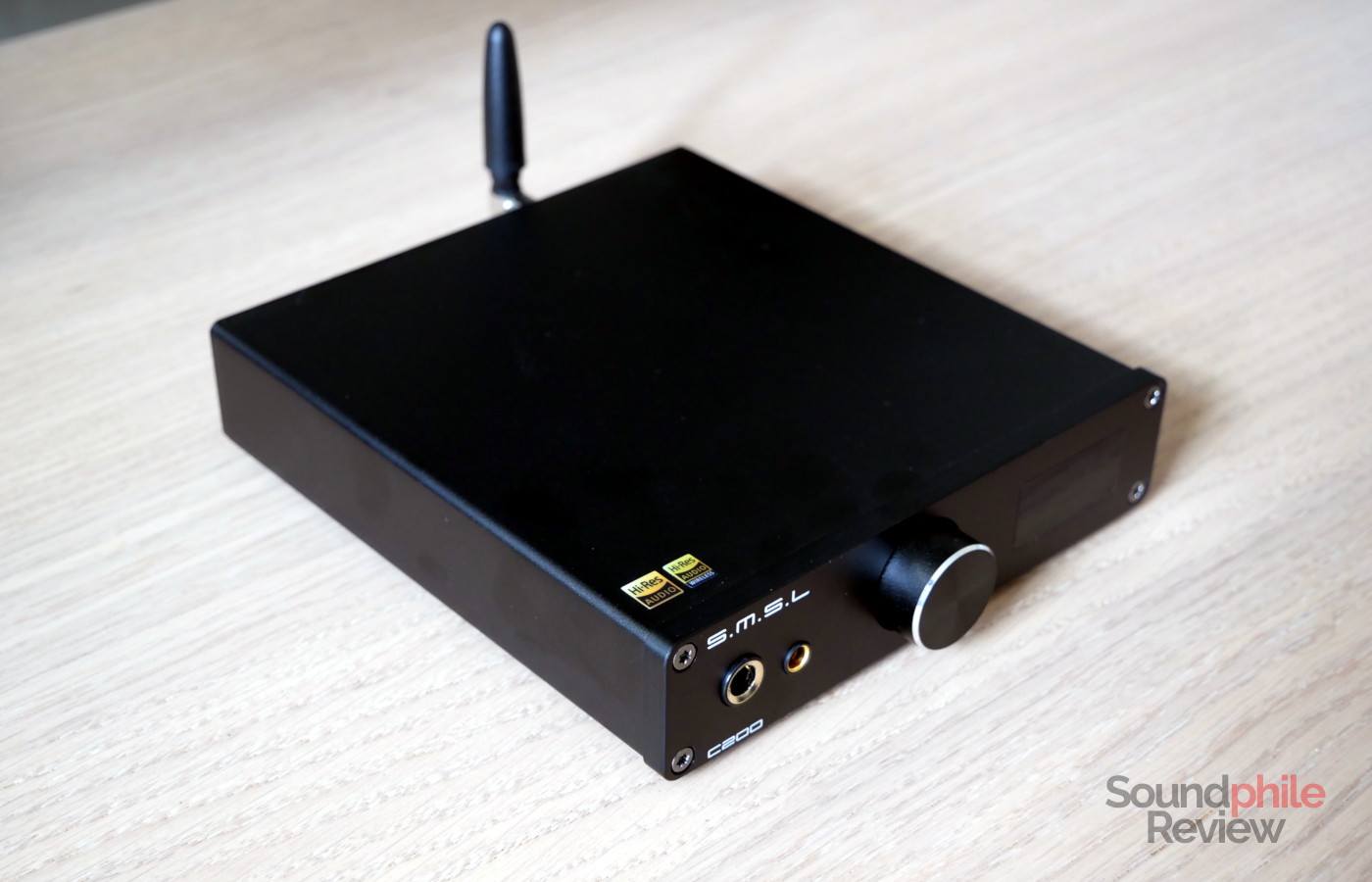
The SMSL C200 is really a diminutive device: it is just 139 x 147.5 x 32 mm, which makes it easy to place it on any desk without taking up much space. It features the classic “audio device” aesthetic that we’ve seen on countless products, from the Topping A30 to SMSL’s own DP3 player. That’s not a bad thing, either, because the design is really minimalistic and I can see it fit well in any context. The device has a metal chassis (aluminium, if I had to take any guesses) coloured in black, with white text on the front and back. It’s an overall very elegantly designed product.
The front hosts a large volume knob in the centre (actually slightly of to the left!), with the two jack outputs to its left (both unbalanced 6.3 mm and balanced 4.4 mm), as well as a display on the right hand side. The back is much more crowded, as it hosts the power connector (the kettle type), an antenna connector for Bluetooth connectivity, optical, USB and coaxial input ports, as well as RCA and TRS 6.3 mm jack outputs.
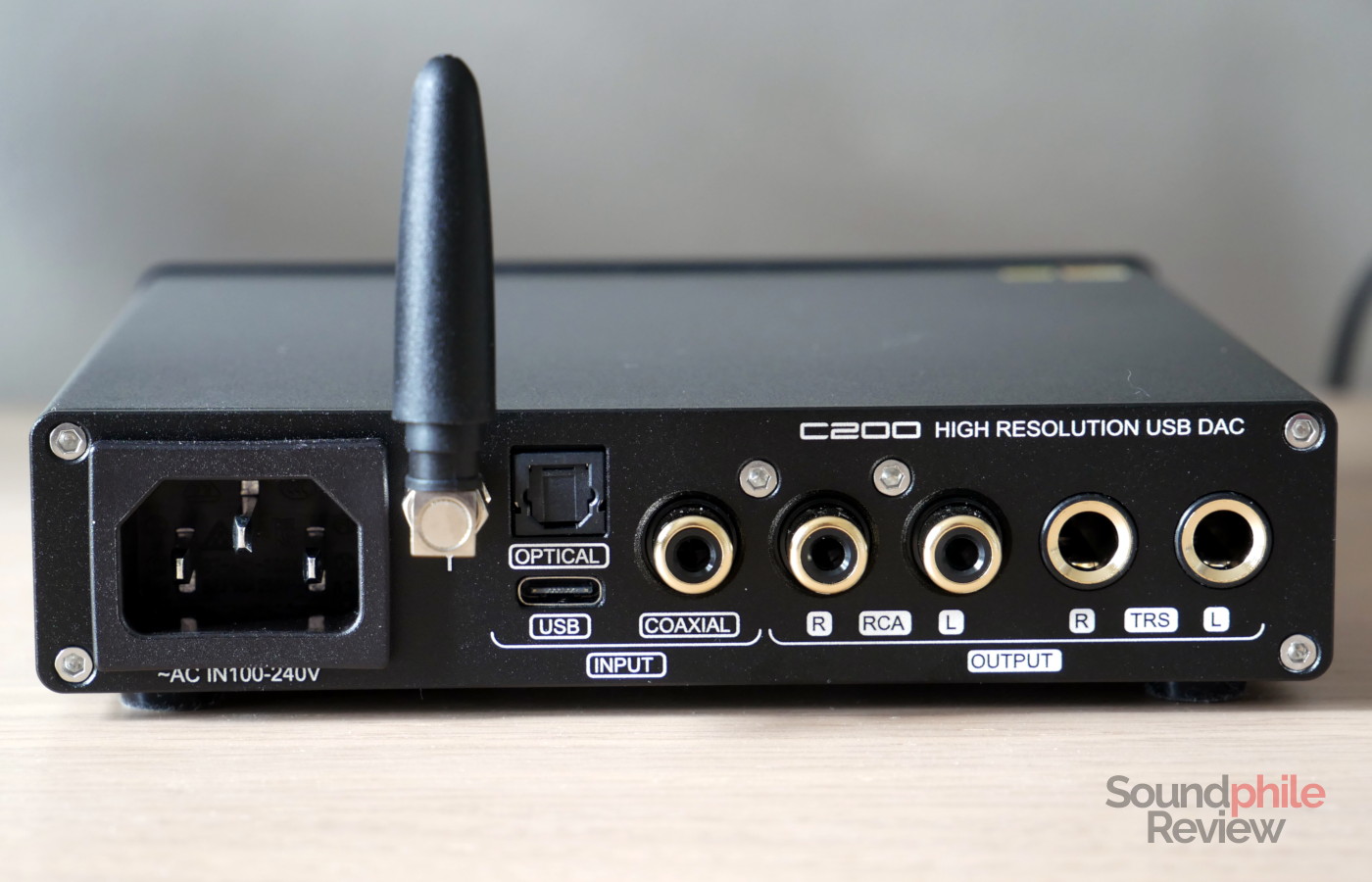
Back to the size considerations, I find it interesting that, in order to reduce the overall footprint of the device, they used TRS 6.3 mm jacks for balanced connections. These are far smaller than the usual XLR connectors while delivering largely comparable specs, and cables with XLR terminations on the other side are quite commonly found and reasonably priced. Despite the small size, the power supply unit is integrated directly into the device, which is quite something and further limits the space occupied by the unit.
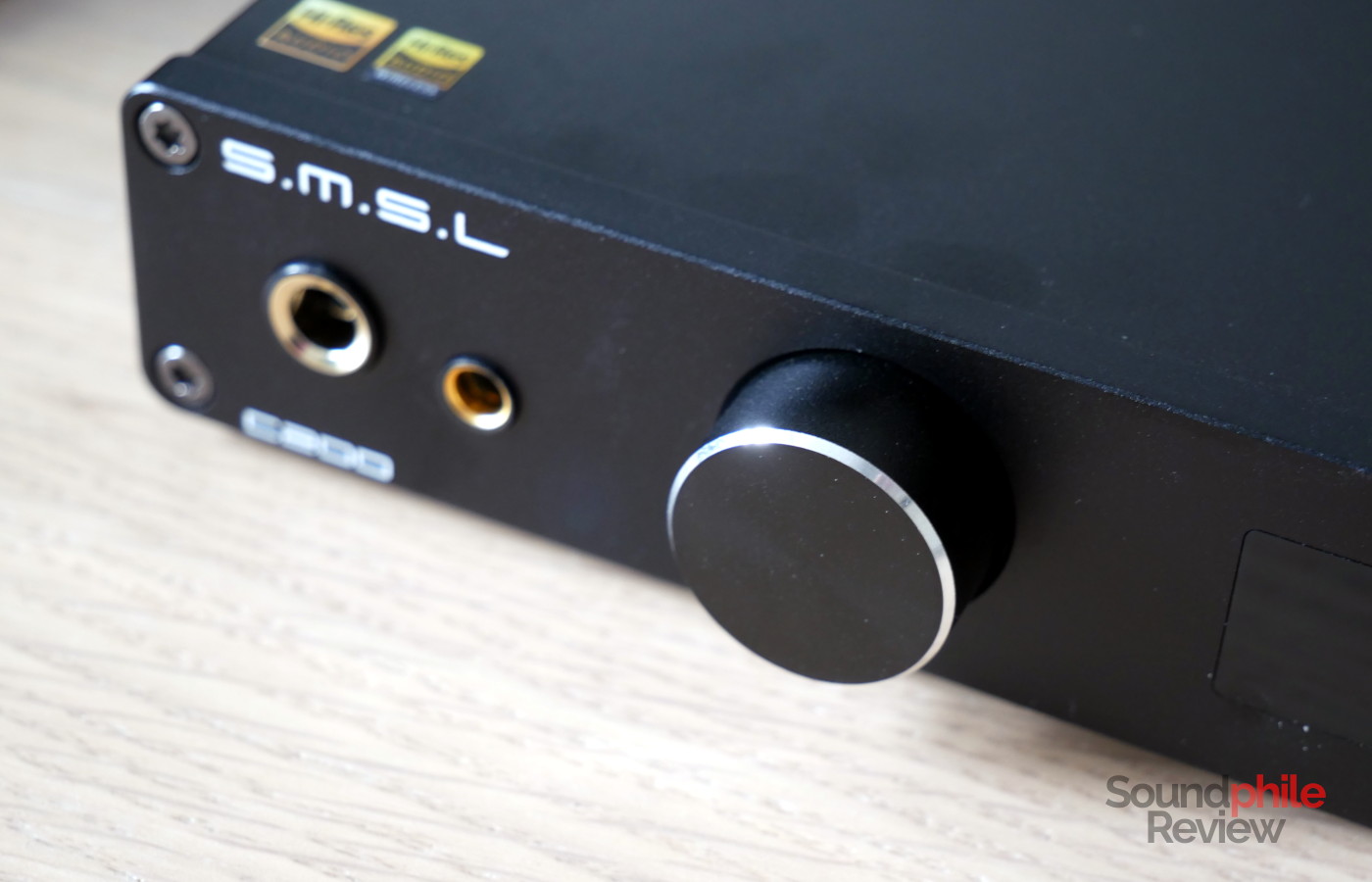
The volume knob is actually a clickwheel, with discrete steps that give you tactile feedback as you rotate the knob. It has a nice weight to it, too, so it’s easy to adjust the volume with precision. The downside of having discrete volume levels is that sometimes volume is either too low or too high and there’s no in-between, but that’s an inherent bug/feature of this type of adjustment.
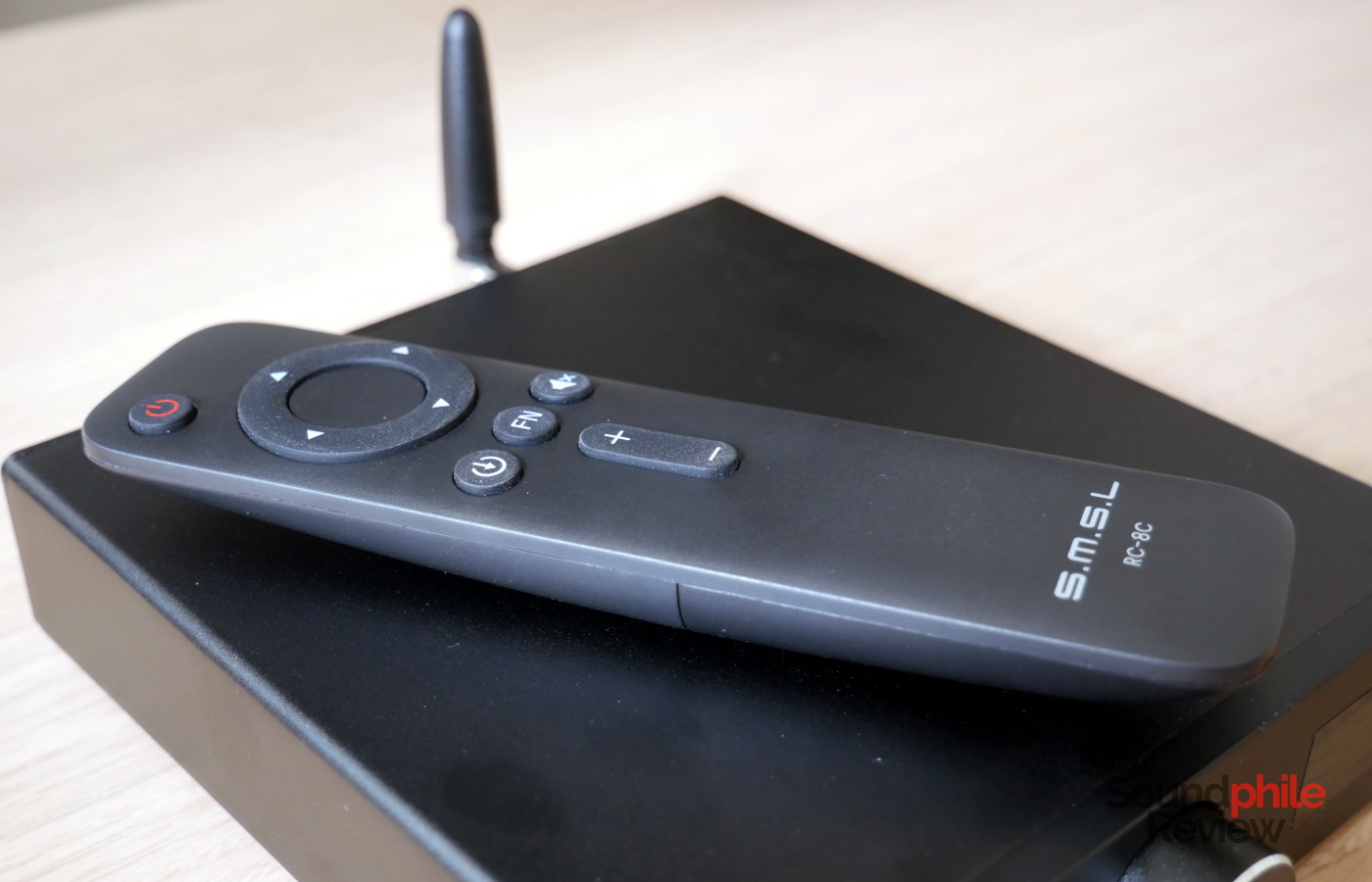
The unit also comes with a remote controller. It is not necessary to control the SMSL C200, as you can do it using just the volume knob, but it does make things easier and more convenient. It’s made of plastic and it has the following buttons: power, up, down, left, right, enter, input, FN (used to switch outputs and, when long pressed, to set the screen to automatically switch off), mute, raise and reduce volume.
Features & Specs
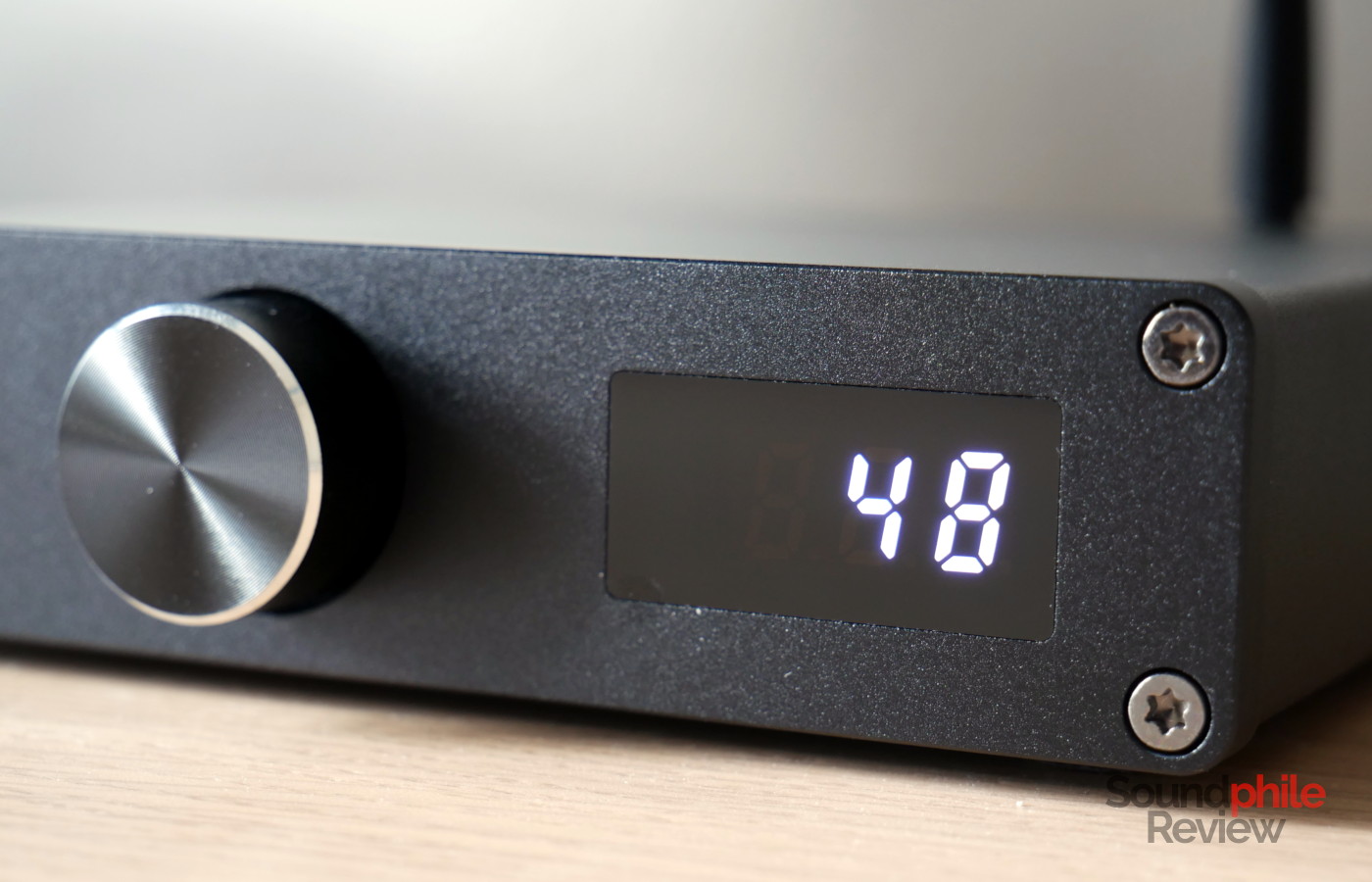
For a device this small, the SMSL C200 is quite versatile and offers a lot of input and output options. Not only can you use USB, but there are also optical and coaxial ports as well as Bluetooth. Speaking of which, you get Bluetooth 5.0 connectivity with SBC, AAC, aptX, aptX and LDAC codecs, which makes the C200 able to deliver great sound quality even without using the wires. You can select both the input and the output, though you can’t differentiate between balanced and unbalanced (and that’s reasonable).
Although it only requires 5 W of power, which can be easily provided by USB, the C200 requires the power cable to be connected in order to be powered – a bit of a missed opportunity to make it more portable, but on the other hand this is understandable due to the internal power supply being reasonably (and I am making an unsubstantiated assumption here) better quality than your average cheap USB power brick.
The SMSL C200 works in a plug-and-play fashion with all major operating systems, including Linux and therefore including the Steam Deck. It can be used in USB Audio Class 1.0 mode, which makes it compatible with game consoles.
SMSL C200 |
| Input | USB (up to 32 bit / 768 kHz, up to DSD512) Optical/coaxial (up to 32 bit / 192 kHz, up to DSD64 as DoP64) Bluetooth (up to 24 bit / 96 kHz) |
| Suitable headphones impedance | N/A |
| Output impedance | “Near 0 Ω” (headphones out) 100 Ω (line out) |
| Maximum output power | 2.6 W (16 Ω) 1.3 W (32 Ω) |
| Frequency response | N/A |
| THD+N (@1 kHz) | < 0.00013% (headphones out) < 0.0001% (line out) |
| SNR | 123 dB (headphones out) 124 dB (RCA) 126 dB (6.3 mm) |
| Crosstalk | N/A |
The SMSL C200 is based on the ESS Sabre ES9038Q2M DAC chip. It appears like just one DAC chip is used, which would make the C200 incapable of “true” balanced audio – which would require two DACs to process the signal in parallel. On the other hand, though, amplification is managed by four OPA1612A chips, which are able to output an overall 2.6 W of power – quite a large amount for a device this small.
Sound
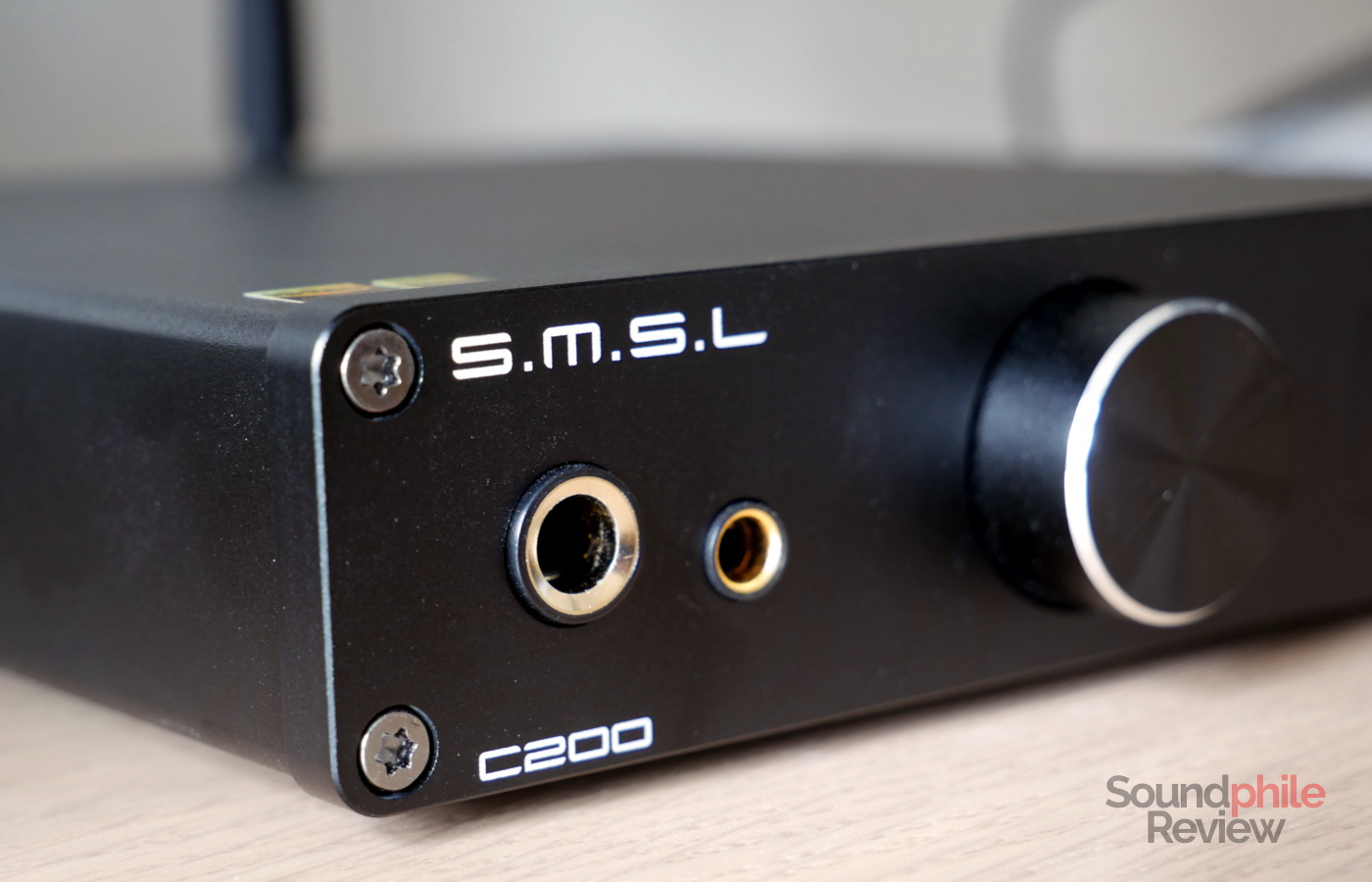
I have tested the SMSL C200 with various headphones, including the HiFiMAN Edition XS and the 7Hz Salnotes Zero.
Although it’s so small, the SMSL C200 is able to drive practically any headphones out there. Even fairly demanding headphones such as the HiFiMAN HE-560 are driven easily and show no issues at all.
As you can legitimately expect, the SMSL C200 has a perfectly neutral signature, which means it’s indistinguishable from most other solid-state devices out there. I deem this a good thing as it means the device is not going to add its own flavour to your music, staying instead out of the way and letting you concentrate on the music itself (or on the headphones, if you wish to do so). There’s a remarkably low noise floor and there’s no hiss nor buzz, despite other devices on my desk having it – which appears to be proof of a good job done by SMSL in managing the power. I find transients to be quite fast, which is especially appreciable with fast headphones like the aforementioned HE-560 or the Edition XS.
Final Thoughts
It is nothing short of astonishing to think that in such few years there has been such an incredible progress. When I started this blog, six long years ago, there was nothing that was even remotely comparable to the C200 at a similar price point. You had to pay at the very least two times this price, but probably even more, if you wanted something that had a similar set of features. It’s impressive to see how much more affordable high-quality audio equipment is nowadays, and with which speed it has arrived. The SMSL C200 is definitely a remarkable device, even more so because it is quite affordable at $210. It doesn’t have all the bells and whistles that more expensive devices offer, but it has plenty for anyone who doesn’t really want to split hairs while looking at a specs sheet. I can’t help but sincerely recommend the SMSL C200 to anyone and everyone: it’s a great device under every perspective and it is definitely worth checking out.

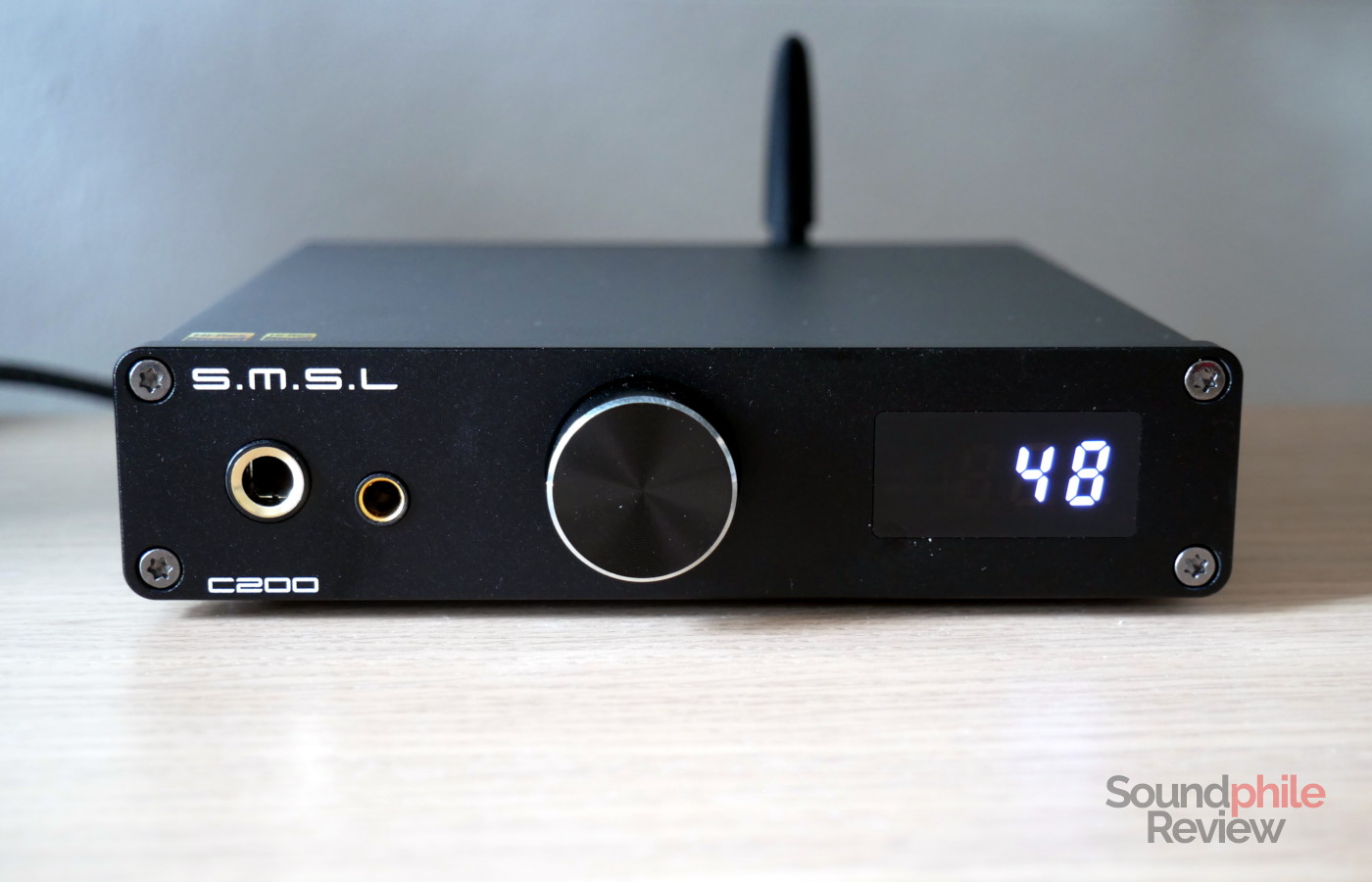



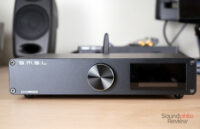
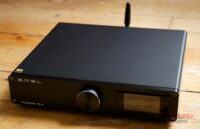


Great review – this may be my solution. My Yamaha RX A780 AVR has horrible headphone sound with my Senn 660s cans. Will this unit take care of that? Here is the back panel of my AVR: https://manual.yamaha.com/av/18/rxa780/en-US/3830016523.html
Many thanks,
Jim
Thanks! I would say that what you need is actually an amplifier, not a DAC+amp like this one. You can’t connect the C200 directly to your Yamaha AVR as it doesn’t have digital outputs. There’s a few amplifier reviews I’ve published, so you may want to take a look at those.
I´ve measured the SMSL C200 output @32 ohms, and I’ve found 3.54Vrms before clipping (volume=97). So, the power is only 390 mW, not the 1.3 W that SMSL publishes. Nevertheless, it is a very good dac+amp.
Do the outputs work simultaneously? Planning to connect a subwoofer to the RCA while I use the TRS for the bookshelf speakers.
Yes, they do!
Hi, I bought the Topping dx3+ pro to use it on my pc to replace a vintage Kenwood basic c2 preamp (used for headphones) but I was disappointed with the extension towards the low frequencies, the response ends already at 30Hz. Does the smsl have a more extended and linear frequency response towards the subs?
Hello,
That’s weird as measurements of that unit show that it should go down to 20 Hz without issues. The C200 appears to go down to 20 Hz in both measurements and my experience. I think that your problem lies elsewhere though (headphones or your very hearing), so I am not sure that buying a new unit will solve the problem.
Hello Ricardo;
Can I use the C200 as a pre amp. using the RCA out into one of the Line inputs on my Yamaha AS 501 amp ?
Will I get sufficient loudness. Usual listening level is between 9 and 11 o clock on the volume knob without any audible hiss.
I would like to use the Amp. purely as a power amp since I expect the DAC chip in the C200 to be superior to the AS501.
Also your thoughts on the sound signature of the C200 compared to the Topping DX3 pro+.
Speakers are Q Acoustics 2050i + REL T zero sub.
Many thanks.
Hello,
You absolutely can. In fact, that is how I have been using it all the time, feeding an amplifier. As for loudness, if you are worried that the max volume is going to be lower, it shouldn’t if you use the C200 at line level, so at the very least you should get what you currently do.
I haven’t tried the DX3 Pro+ so I cannot comment on that unfortunately.
Hi. I’ve just bought this as I’m trying to get decent sound from Spotify, sky etc through my old (mid 90s) hifi. I have optical from TV to the dac, then RCA to stereo. Is that the best way for highest quality do you think? Optical from sky box not working for some reason. Any other ideas? Great review by the way.
If you connect both, speakers and a headphone. Can you switch the outputs easily? With one button or the remote?
Thank you
Markus
Yes, you can! The FN button on the remote can be set to switching outputs as its default function.
Hello Ricardo
The C200 interests me very much.
There is a lot I have to learn about htese DACS, I confess.
But I have a “simplistic” question concerning blutooth use.
Can I use my iPhone to “send” music to the C200 via Blutooth?
Hello Luke,
Yes, you actually can!
Great.
Thanks very much Riccardo!
Two questions.
1 can the C200 be used as a preamp to plug directly into a power amp?
2. Can I send the TRS outputs to my analog crossover to feed my subs, + the RCA outputs to my stereo preamp to utilize both of the C200 DAC outputs at the same time?
I ask because some outputs warn not to try this =/
The review was very helpful. Looking forward to testing the c200 shortly.